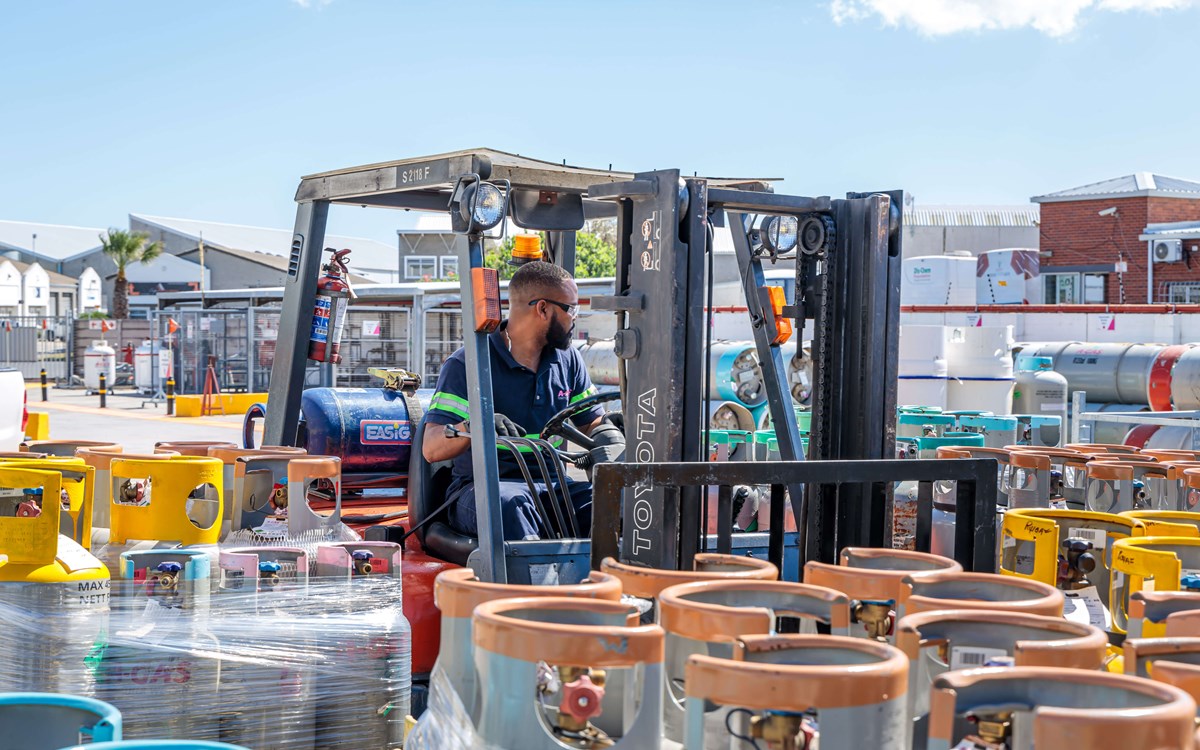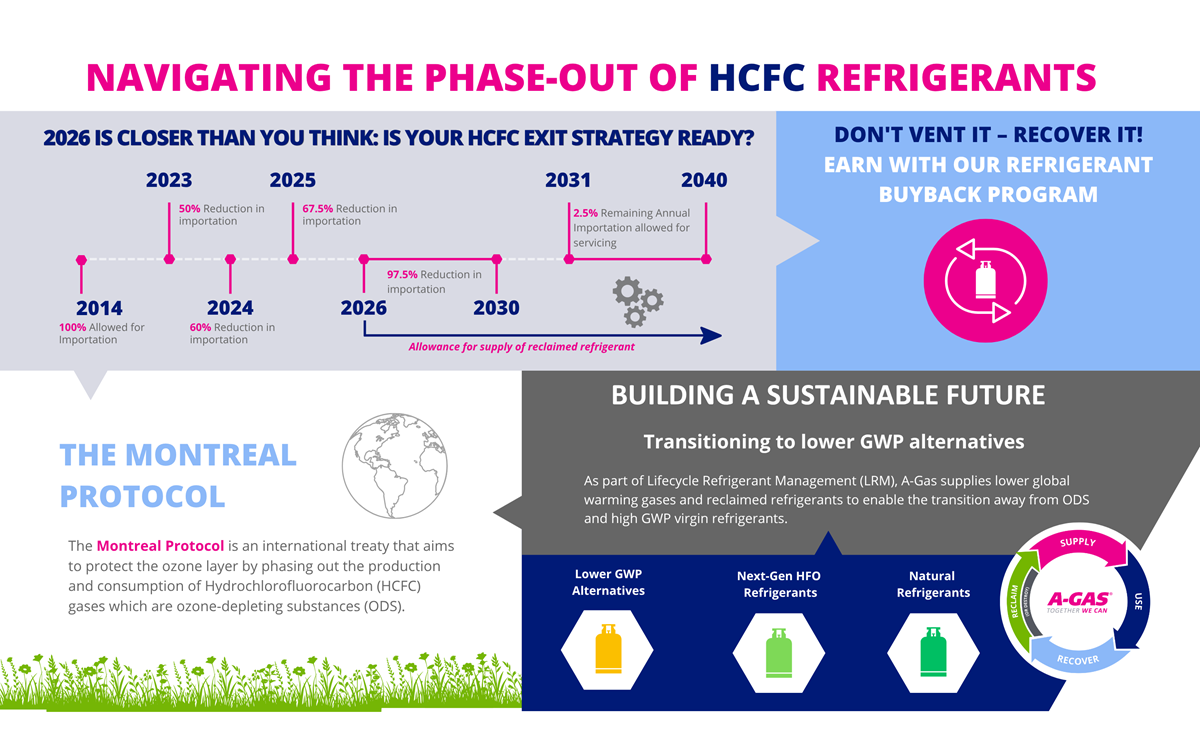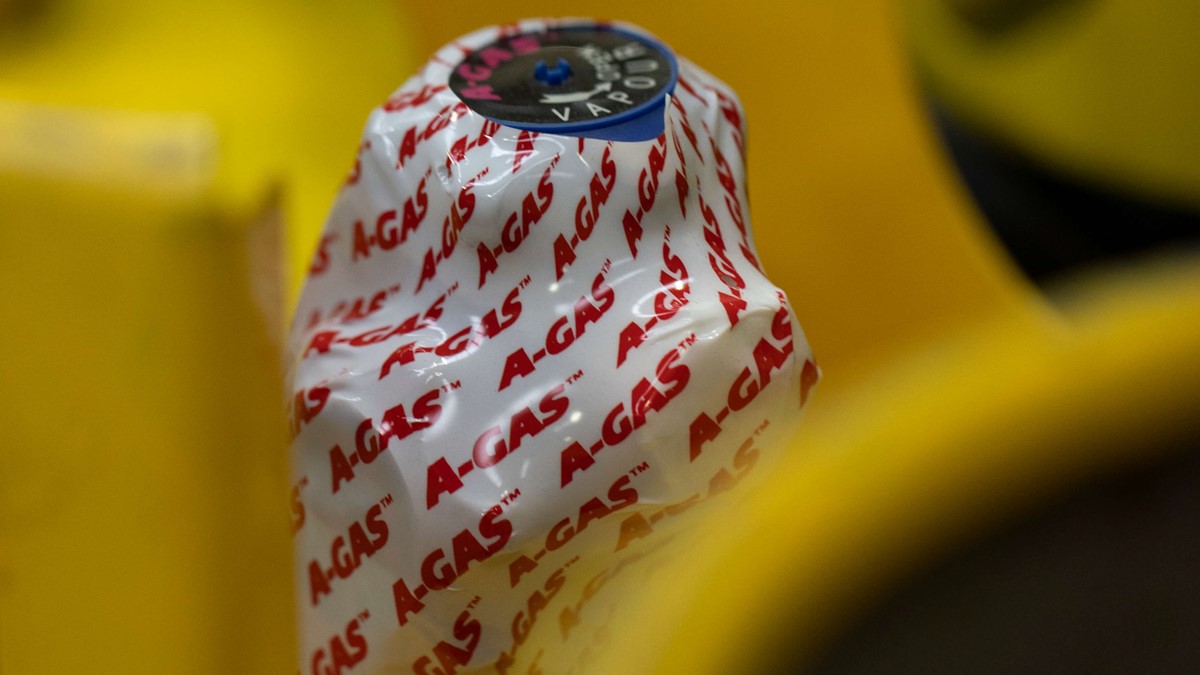Navigating South Africa’s Refrigerant Transition: A Roadmap for the HVAC-R Industry


As South Africa approaches the final stages of the Montreal Protocol, the phaseout of hydrochlorofluorocarbons (HCFCs) is nearly complete. Since the start of the phasedown in 2013, many businesses in the Heating, Ventilation, Air Conditioning and Refrigeration (HVAC-R) industry have transitioned to using hydrofluorocarbons (HFCs). While these are not ozone-depleting, their high global warming potential (GWP) means that they too are subject to phasedowns over the coming decades.
When making refrigerant choices during the current phaseout of HCFCs it is crucial to keep in mind that the Kigali Amendment to the Montreal Protocol (which was signed in 2019 and asks industries and governments to reduce the production and consumption of HFCs by 80% over the next 30 years) will take effect in 2029, beginning a mandated 10% reduction in HFC volumes based on the baseline years of 2020–2022.
South Africa’s Department of Forestry, Fisheries and the Environment (DFFE) continues to develop the national strategy for the phasing down of high-GWP refrigerants, but looking at global trends provides a likely blueprint. Countries that have already implemented similar transitions typically target high-GWP gases first.
Transitioning Away from HCFCs
South Africa has been phasing down HCFCs for the last 15 years at 5% per year as per the Gazette of 2014 and is now in the critical phase, a 30% reduction by the end of 2025. From 2026, there will be an import quota of only 2.5% until 2040. The need for the industry to transition to environmentally responsible alternatives is imperative. The current focus for the South African refrigerant industry is the phaseout of R22, which has been the refrigerant of choice for use in refrigeration, air conditioning and cooling systems for decades.
The shift from HCFCs (like R22) raises several questions for stakeholders as they navigate the best refrigeration choices, such as:
- Can I continue using my existing R22 system and R22 refrigerant?
The availability of R22 refrigerant is expected to diminish as manufacturers face restrictions, leading to a decrease in imports. Consequently, as demand rises and availability wanes, prices are likely to increase. Nevertheless, if effective Lifecycle Refrigerant Management (LRM) is implemented—specifically, the recovery and reclamation of R22 to meet AHRI specifications—R22 may remain accessible even after the quota reductions take effect.
- Can I retrofit my existing R22 system and use an alternative refrigerant?
Retrofitting with HFCs is an option. However, most drop-in replacements are blends, which introduce challenges such as glide, reduced performance and limitations on top-filling due to blend imbalances that reduce system efficiency. Multiple factors like oil type, compressor type, valves, performance impacts and retrofit system costs are all important considerations.
- Should a phased approach be adopted to my system changes?
Installing systems that initially use R404A or R507 can be cost-effective in the short term, but these refrigerants are among the first targeted for phaseout under the Kigali agreement. A more future-proof solution is investing in equipment that is capable of handling next-generation refrigerants, for example, R448A (GWP 1494) and R449A (GWP 1504). These systems can later transition to even lower-GWP A2L refrigerants like R454A (GWP 270) or R454C (GWP 166) with minimal adjustments.
- Should existing HCFC systems be replaced? If so, what is the best alternative?
While natural refrigerants like R744 (CO₂) and hydrocarbons are the ultimate solution, one needs to consider the high initial costs, technical expertise requirements, high pressures, high running costs and flammability concerns.
The Case for Future-Proof Systems
Investing in flexible systems allows businesses to align refrigerant use with Kigali phase-down requirements in mind and avoid frequent equipment reinvestments. Compressors designed to accommodate both current and future refrigerants ensure a smoother transition. By initially using R404A, R507, R448A or R449A, businesses can shift to blended refrigerants like R454A or R454C when Kigali regulations demand lower-GWP solutions and these refrigerants become readily available/more viable in Article 5 countries.
However, those alternatives require meticulous system maintenance and commissioning. Leaks and improper handling can significantly impact performance, highlighting the need for robust upkeep protocols.
Key Industry Pathways
The industry now faces three viable options:
- Maintain and Retrofit
Continue using R22 systems with R22 until the supply runs out or pricing becomes unaffordable to the end-user. Another option is retrofitting these systems with drop-in replacements to maximise the lifespan of existing equipment. - Invest in Flexible Equipment
Install systems capable of handling a wide range of synthetic refrigerants and managing transitions in line with Kigali phasedown milestones. - Adopt Natural Refrigerants
Transition directly to natural refrigerants like hydrocarbons or R744, bypassing interim steps such as using HFCs.
Final Thoughts
The journey towards a low-GWP future is complex but essential for environmental and regulatory compliance. Industry stakeholders must weigh their options carefully, considering both immediate costs, long-term benefits and system implications*. By choosing the right pathway, South Africa’s HVAC-R sector can achieve a seamless transition while contributing to global efforts to mitigate climate change.
By the conclusion of 2025, the R22 refrigerant market will undergo significant changes. Ultimately, any decision made during the transition will carry financial implications.
During this phasedown, as in the previous transition away from CFCs, A-Gas offers a range of alternative refrigerants.
*Please see the table for what considerations you need to take when deciding on a suitable alternative for your system.
